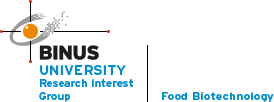ABSTRACT
The objective of this study was to determine the new bioactive compounds through gas chromatography–mass spectrometry analysis and the cytotoxic activity of two rodent tuber mutant plants against breast cancer cells (MCF-7). The bioactive compounds in rodent tuber mutant plants were successfully increased by somaclonal variation using gamma rays irradiation technique. Further, the cytotoxicity activity of rodent tuber mutant plants was tested on breast cancer cell line (MCF-7) performed by 3-(4,5-dimethythiazol-2-yl)-2,5 diphenyltetrazolium bromide assay method. This results study confirmed that the presence of phytochemical composition in the tuber of rodent tuber mutant plants KB 6–1–3–4 and KB 6–9–5 was found six bioactive compounds from fatty acid groups which have the potential as an anticancer compound, such as octadecanoic acid, hexadecanoic acid, hexadecanoic acid methyl ester, 9-octadecanoic acid, linolelaidic acid methyl ester, and butanoic acid. The results showed that extracts from rodent tuber mutant plants had a cytotoxicity effect on MCF-7 cancer cells with half maximal inhibitory concentration (IC50) values that were lower than the control (mother plant). In vitro tests of KB 6–1–3–4 and KB 6–9–5 against MCF-7 cancer cell lines have IC50 values of 12.482 μg/mL and 7.043 μg/mL, respectively, while it had a lower cytotoxicity effect with the IC50 value of control plant was 19.113 μg/mL. The mutant plants of KB 6-9-5 have 3 times more effective than control. The results of this study clearly indicated that rodent tuber mutant plants have shown promising as an anticancer drug on breast cancer.



